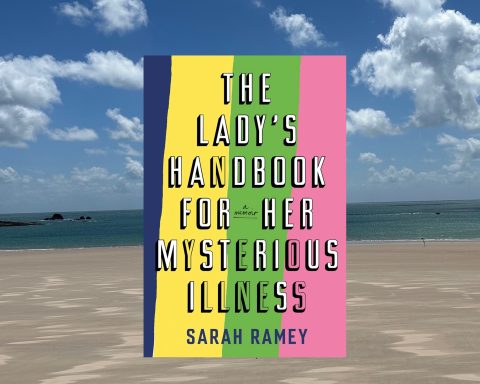 Richard Armitage is a GP and Public Health Specialty Registrar, and Honorary Assistant Professor at the University of Nottingham’s Academic Unit of Population and Lifespan Sciences. He is on Twitter: @drricharmitage
Richard Armitage is a GP and Public Health Specialty Registrar, and Honorary Assistant Professor at the University of Nottingham’s Academic Unit of Population and Lifespan Sciences. He is on Twitter: @drricharmitage
The Constitution of the World Health Organization (WHO) was adopted by the International Health Conference held in New York in 1946, signed by the representatives of 61 States, and entered into force in 1948.1
Within its Constitution, the WHO declared health to be ‘a state of complete physical, mental and social well-being and not merely the absence of disease or infirmity’,1 a definition that the international health agency staunchly stands by and ‘remains firmly committed to’ today.2
Since this declaration, however, the WHO’s conceptualisation of health has received substantial and repeated criticism;3–5 as such, the WHO’s definition of health has been largely thrown out. However, might there be a baby to retrieve from the bathwater?
Problems with the WHO’s definition of health
Machteld Huber and colleagues, for example, decry the WHO’s definition of health as ‘no longer fit for purpose’, and point to the enormous rise in chronic disease prevalence since the definition was first coined, which would render a major proportion of the world’s population unhealthy despite them feeling entirely, or at least sufficiently, well.6 More recently, David Misselbrook pronounced the WHO definition as ‘outdated’, recognising that ‘our definition of health will be linked to the thinking of our time, and it will have a sell by date’.7
“… is it truly the case that the World Health Organization’s definition is so fatally flawed that it must be thrown out completely?”
Multiple attempts to improve the WHO’s definition of health have been offered in reaction to these criticisms. In 1953, Deitrich Bonhoeffer concisely defined health as simply ‘the strength to be’,8 suggesting that health amounts to one’s ability to pursue their life trajectory in the absence of insurmountable barriers pertaining to health.
In the 1970s, Christopher Boorse strongly advocated for the biomedical model of health,9,10 in which health is considered in reference to a state of normality, and the attainment of biomedical norms through the absence or rectification of physiological abnormalities is the single strategy by which health may be achieved.
In 2011, Machteld Huber and colleagues proposed the formulation of health as ‘the ability to adapt and to self manage’.6 And, more recently, David Misselbrook introduced the concept of flourishing by proposing the functional model of health, in which health is recognised as ‘unimpaired flourishing’, and ‘the ability to flourish without being unduly impeded by illness or disability or, if necessary, by overcoming illness or disability’.7
Each of these subsequent conceptualisations of health opt to throw out the WHO’s definition in its entirety and formulate a novel definition from scratch. However, while each of these revised definitions contain multiple accolades, is it truly the case that the WHO’s definition is so fatally flawed that it must be thrown out completely?
Two problems with the WHO’s definition
The amalgamation of criticisms directed towards the WHO’s definition of health can be summarised into two distinct problems.
The larger problem — the Major Problem — is that the totalising nature of the definition (through its use of the word ‘complete’) is a utopian vision that is inherently unattainable. Since no human to date ever has, nor ever will, enjoy a state of complete physical, mental, and social wellbeing, the definition categorises all humans as unhealthy, meaning they are also rendered eligible to receive corrective medical intervention. As a result, the definition creates an unworkable dichotomy that is inherently pathologising and consequently unhelpful.
The smaller problem – the Lesser Problem – is that the WHO’s definition does not make obvious reference to the concept of flourishing. Flourishing, or associated terminology such as ‘the strength to be’ or ‘the ability to adapt and to self manage’, is clearly regarded highly in contemporary interpretations of health, most likely due to the recent enormous increase in multiple chronic morbidity in which individuals frequently flourish despite their ongoing long-term diseases.
Formulated in this way, the Major Problem and Lesser Problem capture the two key complaints directed at the WHO’s definition of health. However, it may be possible that, with a closer examination and a single additional word, the 1946 definition may be transformed to provide a substantial amount of utility.
Dealing with the Major and Lesser Problems
The Lesser Problem is described as such as it may in fact not constitute a problem at all. While the WHO’s definition does not clearly and overtly reference the concept of flourishing, its use of the term ‘social wellbeing’ may actually achieve just that. Flourishing is generally considered to encompass a range of positive psychological constructs that amount to a holistic perspective of what it means to feel well and happy.
Martin Seligman’s PERMA model suggests a framework of five factors — positive emotions, engagement, relationships, meaning, and accomplishments — that are considered necessary for an individual to flourish.11 Simultaneously, ‘social wellbeing’ is widely regarded as ‘the subjective evaluation of personal life circumstances and functioning in society’,12 and is considered to involve ‘developing and maintaining positive interactions with other people and with local and global communities’.13
“It may also be possible to deal with the Major Problem by simply pre-fixing the World Health Organization’s definition with a single word — ‘perfect’.”
As such, there exists a landscape of sizeable, if not near-perfect, conceptual overlap between flourishing and social wellbeing, meaning the WHO’s 1946 definition may in fact encapsulate, through its concise use of the term ‘social wellbeing’, the contemporary conceptualisation of flourishing. In this manner, the Lesser Problem ceases to be a problem at all.
It may also be possible to deal with the Major Problem by simply pre-fixing the WHO’s definition with a single word — ‘perfect’. In doing so, the utopian and utterly unattainable condition is transformed from an inherently pathologising dichotomy to an aspirational and purposefully motivating goal.
This changes the unhelpfully all-or-nothing ‘healthy’ or ‘unhealthy’ dichotomy to a spectrum of health states — with ‘more healthy’ and ‘less healthy’ on opposing poles — across which an individual navigates in response to changes in the relevant factors in their physical, mental, and social wellbeing.
Unlike a categorised dichotomy, this continuous scale allows a new potential space to emerge — that of sufficient health. In this formulation, while perfect health remains an unattainable destination, purposefully striving to navigate towards it increases the chance of enjoying a sufficient amount of health to allow a flourishing life — a state in which the individual has not achieved perfect and complete health yet is not considered to be in need of restorative medical intervention. By the addition of this single word, therefore, the WHO’s definition of health may in fact provide a substantial amount of practical utility.
It may be the case that there is a sizeable baby that must be retrieved from the WHO’s definitional bathwater. Dealing with the Lesser Problem and Major Problem of the conceptualisation in the ways described above might in fact restore sufficient usability to the 1946 definition, and render novel formulations of health as unnecessary.
References
1. World Health Organization. Constitution of the World Health Organization. 1946. https://apps.who.int/gb/bd/PDF/bd47/EN/constitution-en.pdf (accessed 16 Nov 2022).
2. World Health Organization. Constitution. https://www.who.int/about/governance/constitution (accessed 16 Nov 2022).
3. What is health? The ability to adapt. Lancet 2009; 373(9666): 781.
4. Jadad AR, Grady L. How should health be defined? BMJ 2008; 337: a2900.
5. Larson JS. The conceptualization of health. Med Care Res Rev 1999; 56(2): 123–136.
6. Huber M, Knottnerus JA, Green L, et al. How should we define health? BMJ 2011; 343: d4163.
7. Misselbrook D. Aristotle, Hume and the goals of medicine. J Eval Clin Pract 2016; 22(4): 544–549.
8. Bohnoeffer D. Letters and papers from prison. London: SCM Press, 1953.
9. Boorse C. Health as a theoretical concept. Philosophy of Science 1977; 44(4): 542–573.
10. Boorse C. A rebuttal on health. In: Humber JM, Almeder RF, eds. What is a disease? Totowa, NJ: Humana Press, 1997.
11. Seligman MEP. Flourish: a visionary new understanding of happiness and well-being. London: Nicholas Brealey Publishing, 2011.
12. Keyes CLM. Social well-being. Social Psychology Quarterly 1998; 61(2): 121–140.
13. Cicognani E, Martinengo L, Albanesi C, et al. Sense of community in adolescents from two different territorial contexts: the moderating role of gender and age. Soc Indic Res 2014; 119: 1663–1678.
Featured photo by Henley Design Studio on Unsplash.









[…] Editor’s note: See also https://bjgplife.com/the-world-health-organizations-definition-of-health-a-baby-to-be-retrieved-from… by Richard Armitage and https://bjgplife.com/looking-in-and-looking-out/ by Ben Hoban as well as: […]